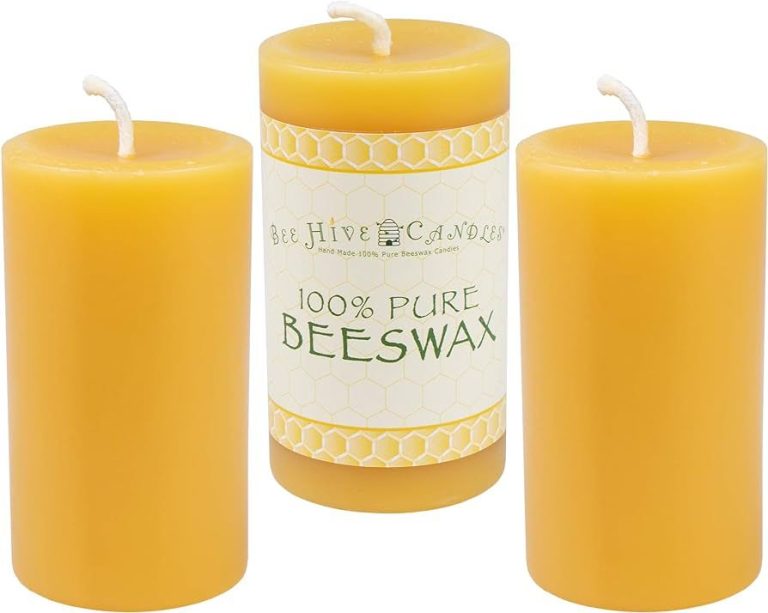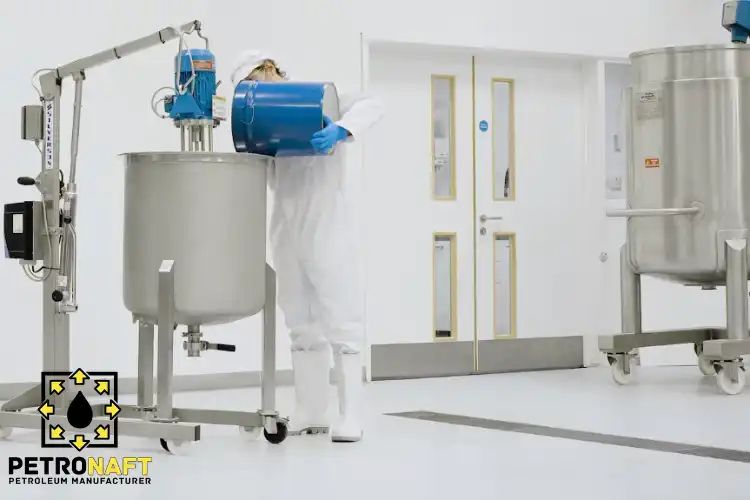Does Wax Melt At Room Temperature?
What is wax?
Wax is a class of organic compounds that are soft and malleable solids at room temperature.https://en.wikipedia.org/wiki/Wax Waxes are hydrophobic, meaning they do not dissolve in water. Chemically they consist mainly of hydrocarbons, esters, fatty acids and alcohols.https://www.mypureoasis.com/cannabis-wax-101/
Some common types of wax include:https://en.wikipedia.org/wiki/Wax
- Paraffin wax – derived from petroleum, coal or oil shale
- Beeswax – produced by honey bees
- Carnauba wax – derived from leaves of a palm tree
- Soy wax – made from hydrogenated soybean oil
- Waxes can also be produced synthetically from ethylene and polymers.
Waxes are secreted by plants, animals and insects or produced synthetically from petrochemicals. They serve a variety of functions in nature, including waterproofing, protection, and adhesion. Waxes have been utilized by humans for purposes like candle-making, lubrication, and cosmetics for thousands of years.https://takomawellness.com/marijuana-wax-what-is-it-and-how-to-use-it/
Melting points of different waxes
The melting point of wax refers to the temperature at which it transitions from a solid to a liquid state. This varies across different types of waxes. Some common waxes and their melting points are:
Beeswax: 144-149°F (62-65°C) (source)
Paraffin wax: 115-142°F (46-61°C) (source)
Soy wax: 113-127°F (45-53°C) (source)
Microcrystalline wax: 145-195°F (63-91°C) (source)
There are several factors that affect the melting point of waxes, including the length of the hydrocarbon chains, branching, and purity. Waxes with longer chains, less branching, and higher purity tend to have higher melting points. The additives blended into waxes can also impact the melting temperature.
Room Temperature Ranges
The average room temperature typically falls between 68-76°F (20-24°C) (Source). However, what is considered a comfortable room temperature can vary depending on factors like humidity, air circulation, clothing, and personal preference.
Some key factors that affect average room temperature include:
– Outside weather – External temperatures influence indoor temps, especially in poorly insulated spaces.
– Geographical location – Average temps are generally cooler in northern regions and warmer in southern regions.
– Seasons – Summer months see higher average temps while winter months have lower averages.
– Type of room – Living spaces are kept warmer than bedrooms or basements.
– Number of occupants – More people in a room raises the temperature.
– Activities – Active rooms like kitchens tend to be warmer than unused spaces.
– Thermostat settings – The thermostat controls the indoor temperature.
– Windows – Lots of windows or poor seals allow more heat transfer.
– Insulation – Well-insulated rooms retain heat better than poorly insulated ones.
Wax melting process
Wax is able to change from a solid to a liquid through the process of melting. Melting occurs when a substance is heated to its melting point temperature. At this point, the kinetic energy of the molecules increases enough to overcome the intermolecular forces that hold the molecules in a rigid structure as a solid. The molecules gain enough energy to move freely and slide past one another, changing to the liquid phase.
As wax is heated, the hydrocarbon molecules that make up paraffin wax begin vibrating more rapidly as they gain kinetic energy. The increasing molecular motion causes the molecules to push apart and break free of their fixed positions in the solid state. This allows the molecules to move more freely around each other, though they still interact through intermolecular van der Waals dispersion forces. Once enough energy is gained for the majority of interactions between molecules to be broken, the paraffin changes phase to a liquid state. This melting process occurs gradually over a temperature range known as the melting point.[1]
The melting point of a pure paraffin wax is dependent on the hydrocarbon chain length, ranging from around 46–68°C. Impurities and additives can modify the melting point. The melting process does not occur at one precise temperature, but over a narrow temperature range as more and more molecular interactions are disrupted. When fully melted, paraffin wax will appear as a clear, colorless liquid if pure.[2]

Understanding the molecular behavior of wax during melting is key to properly using wax in applications like candles, cosmetics, art, and more.
Sources:
[1] https://www.purcellandwoodcock.com/blog/how-to-use-wax-melts.html
[2] https://www.shearer-candles.com/en-us/blogs/blog/how-to-use-wax-melts-guide
Will wax melt at room temp?
Whether or not wax melts at room temperature depends on the type of wax and the exact room temperature. Room temperature is generally considered to be around 20-22°C (68-72°F).
The melting points of common waxes are:
- Paraffin wax: 47-65°C (117-149°F)
- Beeswax: 62-64°C (144-147°F)
- Soy wax: 54-60°C (129-140°F)
- Palm wax: 53-62°C (127-144°F)
- Gel wax: 60-70°C (140-158°F)
As you can see, most common waxes have a melting point well above normal room temperature. The only wax that potentially could melt at room temperature is palm wax, with a melting point starting around 53°C (127°F).
However, palm wax would likely only melt if the room was at the highest end of the temperature range. Most waxes like paraffin, beeswax, and soy wax have melting points at least 25°C (45°F) higher than room temperature and would remain solid.
So in summary, some waxes like palm wax may begin softening at warm room temps but most candles and waxes are formulated to stay solid at normal room conditions.
Using waxes above room temperature
There are many applications where waxes are intentionally melted by heating them above room temperature. Some examples include:
Candle making – Paraffin wax and beeswax are commonly used to make candles. The wax is melted to a liquid state and then poured into molds to make a variety of candle shapes. Candles are a popular use of melted wax that dates back thousands of years. See Candlemaking for more information.
Batik art – Batik is a technique where wax is applied as a resist before dyeing fabric. The wax resists the dye and creates decorative patterns and motifs when removed. To make batik art, beeswax or paraffin wax is melted and applied to fabric. See the Shearer Candles article for a brief overview of batik wax art.
Wax seals – Wax seals have been used throughout history on documents and letters. A stick of seal wax is melted over a flame and allowed to drip on the object to be sealed. Wax seals serve decorative and security purposes. Happy Wax provides a short history of wax seals.
Storing wax properly
One of the main factors to preserving the shape and quality of wax long-term is properly storing it. According to How To Store Dabs – An Ultimate Guide, it’s critical to keep dabs and wax in a cool, dark place with little temperature and humidity variation. The optimal temperature range is between 60-72°F.
When storing wax, it’s best to use an airtight silicone or glass concentrate storage container. Silicone containers are ideal because wax won’t stick to the sides. According to Dab Storage: Best Practices for Storing Concentrates, silicone concentrate jars come in various shapes and sizes to suit different needs. The airtight seal prevents air exposure and keeps wax fresh.
You can also store wax in parchment paper inside a sealed glass or silicone container. Make sure to keep containers in a cool, dark cabinet or drawer away from heat and light sources. The refrigerator is another good option, but don’t store wax in the freezer as extreme cold can change the consistency.
With proper storage methods, the shape and potency of wax can be preserved for several months up to a year. Just avoid temperature fluctuations, humidity, air exposure, and direct light.
Fun facts about wax
Wax has been used by humans for thousands of years. The earliest evidence of beeswax use comes from a Neolithic village dating back to around 7000 BCE in Anatolia (modern-day Turkey). People used beeswax for candles, waterproofing, metal casting, and even chewing gum!1
Ancient Romans and Greeks used wax tablets for taking notes. They would write into the wax coating on wood panels using a pointed stylus. The wax could be smoothed and re-used over and over again. Wax tablets were an early form of notebook! 2
Sailors throughout history have used wax to waterproof their canvas sails and clothing. Beeswax mixed with linseed oil makes an excellent water-repellant coating. The famous Mackintosh raincoats invented in 1823 used wax to make the cotton fabric waterproof.3
The “lava” in lava lamps is actually just colored wax floating in oil. The heat from the lamp bulb makes the wax blobs dance up and down hypnotically. Lava lamps were invented in 1963 and became an iconic 1960s psychedelic decor item. 1
Other materials with low melting points
Like wax, there are many other materials that have melting points close to or within room temperature ranges. These include:
Chocolate has a melting point between 86-95°F, making it prone to melting at warm room temperatures. According to Quora, other food items like butter, margarine, and ice cream can also begin to soften and melt near room temperature.
The metal gallium is unique in that it melts at around 85.57°F. This means it will melt from the heat of your hand according to Science Madness.
Thermoplastics like PLA, ABS, nylon, and PETG plastics commonly used in 3D printing have relatively low melting points from 104–248°F. At higher room temps, they are at risk of deforming or melting if left on a hot surface or in direct sunlight.
Summary
As discussed, some common waxes like paraffin wax and beeswax have relatively low melting points below room temperature ranges. This means they can become liquid and melt at typical indoor conditions. However, waxes like carnauba wax have much higher melting points above 100°F, so they will remain solid at room temp.
Melted wax has many uses, from candle making to sealing letters or envelopes. But to keep wax solid and prevent unwanted melting, it should be stored properly in a cool, dry location away from direct sunlight or other heat sources. Ideal storage temps are around 60-75°F.
In summary, the answer to whether wax melts at room temperature depends on the type of wax. Lower-melting point waxes like paraffin and beeswax will likely melt, while higher-melting point waxes will remain solid. Proper storage conditions are important for maintaining wax in its desired solid or liquid state.






